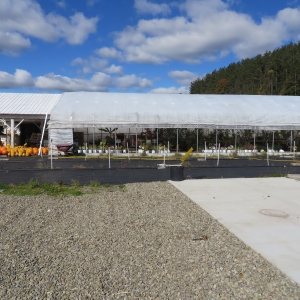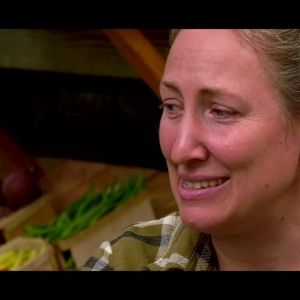By: Carol Sitarski, Master Gardener, Cornell University Cooperative Extension (CCE)
“The worms crawl in the worms crawl out, the worms play pinochle in your mouth”. Remember that song from childhood? Well, those are not the worms we gardeners so love. This fall while I was putting in some last minute bulbs on a cold fall day I was surprised to find our little friends still close to the surface and it started me thinking about what earthworms do in the winter. During my research I discovered some facts about earthworms that were very interesting. We all know earthworms dramatically alter soil structure, water movement, nutrient dynamics and plant growth. Right?!
But did you know:
-
There are 23 families of earthworms, more than 700 genera and more than 7,000 species throughout the world.
-
All native earthworms in the Great Lakes Regions were lost during the glacial periods and for thousands of years there were none. All species of Lumbricids (earthworms) were brought here by settlers. Most important are Lumbricidae which includes genuses Lumbricus terrestris L. (night crawler), Aporrectodea and several others.
-
In terms of biomass and over all activity, earthworms dominate the world of soil invertebrates, including arthropods.
-
They are hermaphroditic (they have both male and female reproductive organs) but they do not self-fertilize. They need to mate to do this. The egg and sperm are coated in a slimy fluid secreted from the clilellum, the bulge near the first third of the body. It can take two to four weeks gestation to hatch and sometimes years depending on weather conditions.
-
They have tiny bristles called setae on the body to help them move.
-
To help them digest food they have tiny stones in their gizzard. I wonder how many you would need for dinner?
-
Different species of earthworms inhabit different parts of the soil and have distinct feeding strategies. All three groups are common and important to soil structure. Surface soil and litter species – Epigeic species. Upper soil species – Endogeic species. Deep-burrowing species – Anecic species (night crawler).
-
An earthworm can live up to six years and be anywhere in size from an inch to up to six feet in some species. Our favorite, the night crawler, can grow up to 14 inches.
-
Earthworms can turn over the top six inches of soil in ten to twenty years.
-
A square yard of cropland can contain from fifty to three hundred worms, but grassland or woods can contain as much as one hundred to five hundred per square yard.
-
Contrary to legend if a worm is cut in half it will not regenerate into two separate worms.
-
There is an invasive species of Asian earthworm Amynthas agrestes also known as “crazy snake worm” or “Alabama jumper”. These are starting to cause serious environmental injury to Northeast forests as they seriously devour leaf litter altering soil chemistry and causing habit reduction for other creatures. They may have been introduced accidently by fishermen using them as bait and by gardeners who purchased them over the internet for composting. Be very careful when purchasing to get Lumbricus Terrestris L. (night crawlers).
As you remember, my original purpose was to find out what earthworms do during the winter, look at all the other great facts I came across while researching. Oh yeah, in the winter, worms burrow down in the soil below the frost line. There they line the chamber with mucus to keep their skin moist to help breathe as this is how they receive air. Worms enter into a state of estivation which is a reduced metabolic state, but not true hibernation. Earthworms that do not borrow down to avoid freezing ... die. Before they die they lay eggs in cocoons to over winter and the eggs hatch when the weather warms up. Now you know! The best advice I can give all the worms out there… Sleep late!












